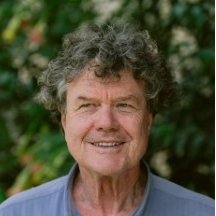Quantum Thermodynamics
A special issue of Entropy (ISSN 1099-4300). This special issue belongs to the section "Quantum Information".
Deadline for manuscript submissions: closed (30 July 2017) | Viewed by 167642
Special Issue Editor
Interests: quantum thermodynamics; quantum heat engines; quantum refrigerators; quantum dynamics; quantum control; quantum information
Special Issues, Collections and Topics in MDPI journals
Special Issue Information
Dear Colleagues,
Quantum thermodynamics is the study of the relations between two independent physical theories: thermodynamics and quantum mechanics. Both theories address the same physical phenomena of light and matter. In 1905, Einstein postulated that the requirement of consistency between thermodynamics and electromagnetism leads to the conclusion that light is quantized.
Currently, quantum thermodynamics addresses the emergence of thermodynamic phenomena from quantum mechanics. In addition, to what extent do the paradigms of thermodynamics apply in the quantum domain, when quantum effects, such as quantum correlation, quantum fluctuation, coherences and entanglement, come into play. Emerging novel quantum technology motivates the quest for smaller devices. Such devices operating at the quantum level form the foundation for quantum information and quantum metrology. These devices have to be cooled, requiring quantum refrigerators. Any practical consideration will therefore involve thermodynamical principles.
The field of quantum thermodynamics is going through rapid development with contributions from many fields of science physics, such as open quantum systems, quantum information, quantum optics, statistical physics, solid state, cold atoms, optomechanics and more. This interdisciplinary character leads to different viewpoints. I, therefore, solicit contribution to this Special Issue of the many faces of quantum thermodynamics.
Prof. Dr. Ronnie Kosloff
Guest Editor
Manuscript Submission Information
Manuscripts should be submitted online at www.mdpi.com by registering and logging in to this website. Once you are registered, click here to go to the submission form. Manuscripts can be submitted until the deadline. All submissions that pass pre-check are peer-reviewed. Accepted papers will be published continuously in the journal (as soon as accepted) and will be listed together on the special issue website. Research articles, review articles as well as short communications are invited. For planned papers, a title and short abstract (about 100 words) can be sent to the Editorial Office for announcement on this website.
Submitted manuscripts should not have been published previously, nor be under consideration for publication elsewhere (except conference proceedings papers). All manuscripts are thoroughly refereed through a single-blind peer-review process. A guide for authors and other relevant information for submission of manuscripts is available on the Instructions for Authors page. Entropy is an international peer-reviewed open access monthly journal published by MDPI.
Please visit the Instructions for Authors page before submitting a manuscript. The Article Processing Charge (APC) for publication in this open access journal is 2600 CHF (Swiss Francs). Submitted papers should be well formatted and use good English. Authors may use MDPI's English editing service prior to publication or during author revisions.
Keywords
- The emergence of thermodynamics from quantum mechanics.
- Thermalization of quantum systems.
- Quantum signatures in thermodynamics.
- Manifestations of quantum phenomena in thermodynamics.
- Quantum heat transport.
- Quantum heat engines and refrigerators.
- Quantum thermodynamic resource theory.
- Experimental realization of quantum thermodynamic effects.
- Quantum fluctuation relations.
Related Special Issues
- Thermodynamics of Quantum Information in Entropy (6 articles)
- Quantum Thermodynamics II in Entropy (8 articles)






